Initially, it was man against man, and later in large dogfights with multiple planes. The warring nations needed heroes, and the brave pilots were often glorified as flying knights, entertaining the war-weary masses through the domestic press.
Germany, in particular, cultivated its flying heroes, and even today many people know the greatest of them all: the Red Baron, Manfred Freiherr von Richthofen, who managed to shoot down 80 planes before he himself was killed in April 1918. Other famous names included Albert Ball (UK), Charles Guynemer (F), René Fonck (F), Ernst Udet (DE), Werner Voss (DE), and Hermann Göring (Yes, that Göring!).
But there were many others, and their stories are almost forgotten, despite their courageous fights in the air along the entire front. From the English Channel to the Pyrenees in Italy and the Eastern Front to the Ottoman Empire in the south.
Their stories are fascinating. Here are some of them:
Adolphe Célestin Pégoud, France 6 kills. The first Ace of them all
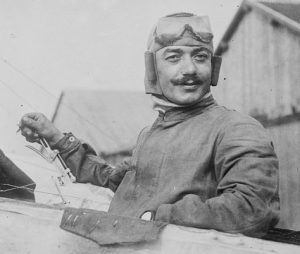
French aviator Adolphe Pégoud (1889-1915). Public domain, via Wikimedia Commons
Adolphe was an extraordinary individual. In 1913, he embarked on a remarkable journey into the skies, becoming the first person ever to leap from an airplane using a parachute. As he descended beneath the canopy, he witnessed the driverless aircraft gracefully maneuvering through twists and turns, igniting his determination to achieve another groundbreaking feat: the first loop-the-loop maneuver. On September 21st, 1913, Adolphe accomplished this daring feat, only to discover that Pyotr Nesterov (mentioned below) had surpassed him by a mere two weeks.
Adolphe Pegoud cemented his place in history by becoming the first fighter ace ever recorded, shooting down a remarkable five enemy airplanes. However, after downing yet another enemy plane, his remarkable success was cut short when he met a tragic fate at the hands of his former student, unteroffizer Kandulski,. Adolphe’s life was tragically cut short at the age of 26.
Pyotr Nikolayevich Nesterov, 1 kill. The first to destroy an enemy in flight
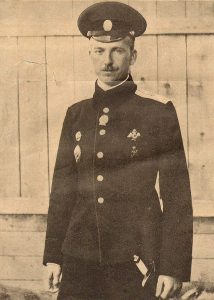
Unknown author, Public domain, via Wikimedia Commons
The military trajectory of Pyotr Nesterov, a distinguished Russian Army aviator, may have been brief, yet it was significant enough to warrant recognition. Although he did not ascend to the ranks of a fighter ace, his name rightly features on this list due to his groundbreaking contributions.
A pioneering figure in aviation history, Nesterov was the first to successfully execute a loop-the-loop, a feat that would indelibly shape the evolution of air combat strategies. This audacious maneuver, later dubbed the “Nesterov Loop,” inspired pilots globally to experiment with and enhance similar techniques, transforming it into a fundamental tactic in aerial warfare that allowed pilots to secure an advantageous position against enemy aircraft.
Amid the Galician battle in 1914, Nesterov, likely driven by a compelling desire to incapacitate an enemy aircraft, deliberately plunged his Morane-Saulnier Type G into an Austrian reconnaissance plane. The resulting collision was catastrophic, causing both severely damaged aircraft to plummet to the ground.
This tragic event led to the loss of Nesterov and the two Austrians onboard the reconnaissance plane. Nevertheless, this marked a pivotal moment in history as Nesterov became the first pilot to destroy an enemy aircraft in mid-flight.
József Ittebey Kiss, Hungary, 19 victories. His girlfriend mourned him until her own death
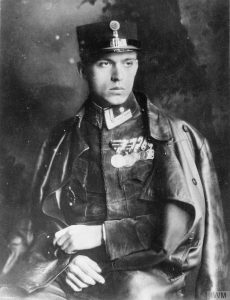
fotografo ufficiale impoero austro-ungarico, Public domain, via Wikimedia Commons
József Ittebey Kiss was a highly skilled Hungarian aviator. He held an impressive record of 19 aerial victories during his service.
Kiss was flying for the Austro-Hungarian Empire and was a reckless fighter with extraordinary piloting skills. He made up the so-called “Kaiser Staffel” (the emperors squadron) together with fellow aces Julius Arigi and Josef von Maier. Despite this he was never commissioned as an officer because of his humble background and limited schooling.
Allegedly József Ittebey Kiss’s story was marked by a deeply personal element of love and loyalty. On May 24th 1918 he was killed by Canadian ace Gerald Birks. His girlfriend, gripped with sorrow, never wed and as the story goes, she visited his grave every day with fresh flowers for 56 years until her own death.
József Ittebey Kiss was posthumously promoted to Lieutenant, the only NCO (Non-commisioned Officer) in the Austro-Hungarian military to do so.
Indra Lal Roy, India, 10 victories. Woke up in the morgue and continued to fly
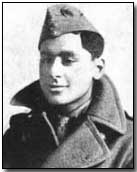
Public domain, via Wikimedia Commons
Also known as “Laddie,” Indra Lal Roy was born in Calcutta, India, during the time when it was part of the British Empire. Showing great determination, he joined the Royal Air Force just five months after turning 18. He had a rough start. In a fateful incident, he crash-landed his aircraft and was presumed dead, only to awaken in a French morgue.
Undeterred by this setback, Laddie swiftly rebounded and achieved an extraordinary feat. Within a mere 13 days, from July 6th to July 19th, he rose to become a double ace, claiming ten aerial victories. Tragically, he was shot down and lost his life during a dogfight over Carvin, just three days later, while engaging Fokker DVIIs from Jagdstaffel 29.
Indra Lal Roy holds a significant distinction as the sole Indian flying ace of the First World War.
Charles George Gass, Observer gunner, 39 victories
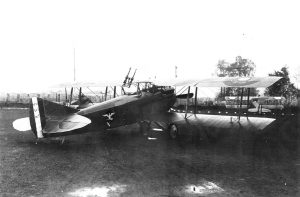
USGOV-PD. Air Service, United States Army, Public domain, via Wikimedia Commons
Not all aces were pilots. Reconnaissance planes played a very important role in World War I. These aircraft gathered intelligence about enemy positions, movements, artillery spotting, and scouting patrols. Obviously, the enemy was keen to shoot down these planes. As a result, reconnaissance airplanes like the French Spad 11 and the German LVG C.VI had a rear gunner to protect the plane from enemy fighters.
Although never really recognized at the same level as fighter aces, some of these observer gunners stacked up an impressive number of aerial victories.
One of them was Charles George Gass, who flew with several pilots in a Bristol F.2b, including Alfred Atkey. The pair, along with another British observer plane, engaged in a battle with 20 German fighters, of which Charles George Gass shot down 5. Two days later, they shot down another 5 planes.
Charles George Gass finished the war with an impressive 39 victories, far more than the more recognized aces of the so-called Great War.
Aristeidis Moraitinis, Greece. 9 victories
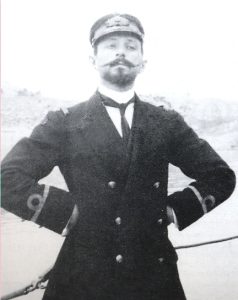
άγνωστος/unknown, Public domain, via Wikimedia Commons
World War I was truly a global conflict, and although the highest-scoring aces typically came from Germany, Great Britain, France, and, to some extent, Austria-Hungary, other nations also had their own aces. One such ace was Aristeidis Moraitinis.
In 1917, Greece joined the Triple Entente during World War I. Moraitinis, a Greek pilot, was subsequently deployed to the northern Aegean region, where he served under the command of the British Royal Naval Air Service, flying Sopwith Camels.
On a particular occasion, Moraitinis escorted two British Sopwith Baby Seaplanes on a mission to bomb the Turkish Battlecruiser Yavuz Sultan Selim. During their flight, they were intercepted by ten enemy aircraft. Aristeidis Moraitinis successfully shot down three of them.
Aristeidis Moraitinis survived the war with nine victories to his name, only to tragically crash into Mount Olympus in December 1918 due to bad weather.
The so-called Great War was truly a World War, involving millions of soldiers from many nations. Including thousands of airmen. These were a few of the heroes that fought in the skies over the bloody battlefield. Many of them losing their lives.

